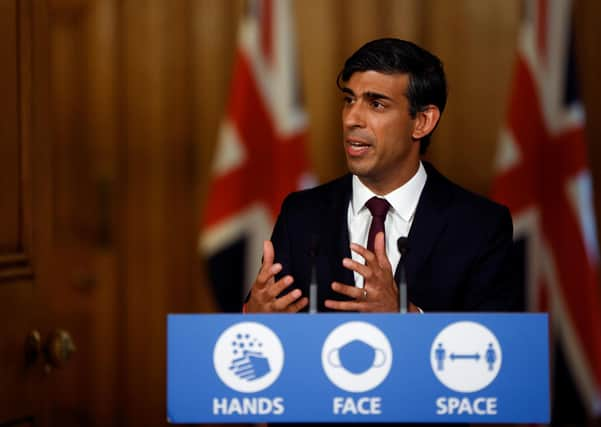The Chancellor’s support package gives hope, but is it enough?


Following the UK’s reinstatement of some COVID-19 restrictions and the announcement of a new Job Support Scheme, the FTSE 100 lost 2.78 per cent.
The US S&P 500, on the other hand, tumbled 3.3 per cent driven by a lack of a Coronavirus aid package and a rise in political uncertainty in the US.
Advertisement
Hide AdAdvertisement
Hide AdFollowing the government’s reinstatement of measures to stop the spread of the virus, Chancellor Rishi Sunak has announced his new ‘winter economy plan’.
The Job Support Scheme is due to replace the furlough scheme once it comes to an end on 31st October. According to the Office for National Statistics, there are nearly three million workers who are on partial or full furlough leave, sparking many fears that once the scheme ends, firms will make mass job cuts.
The new Job Support Scheme will require both the government and firms to top up workers’ wages, covering up to two-thirds of their hours for the next six months.
However, in order to qualify for the scheme beginning on November 1st, employees will be required to work for at least a third of their normal hours.
Advertisement
Hide AdAdvertisement
Hide AdThough not as generous as the previous furlough scheme, the hope is that the support plan will prop up struggling households, but it relies heavily on businesses to keep operating, even if at a reduced capacity.
The reintroduction of tighter Coronavirus restrictions has weakened the rise in manufacturing sentiment, which was seen over the summer.
As business leaders reported a drop-in optimism and consumer confidence, the IHS Markit/Cips UK flash composite Purchasing Managers’ Index (PMI) for September fell to 55.7 from 59.1 last month.
On a positive note, data suggested that the fastest expansion of total new work from abroad since February 2018 had occurred.
Advertisement
Hide AdAdvertisement
Hide AdIn July and August, spending rose sharply as consumers enjoyed the easing of restrictions and the ‘Eat Out to Help Out’ scheme, however, following a surge in COVID-19 cases and the end of the government’s incentive scheme, growth has now slowed again.
Through our forward-looking lens, we would expect this reading to tail off slightly as we enter a period of lower growth, but much of this depends on the severity of restrictions to the UK economy in the coming months.
On Tuesday, the US House of Representatives overwhelmingly voted to ban all imports from China’s Xinjiang region, focused on stopping what lawmakers say is systematic forced labour on the Uighur community.
Despite opposition by many US businesses, the act passed 406-3 in a sign of increasing outrage over Xinjiang, where activists believe that over one million Uighurs and other Muslim-Turkic-speaking people have been held in camps.
Advertisement
Hide AdAdvertisement
Hide AdHouse Speaker, Nancy Pelosi, stated that most products which are made from forced labour end up in American stores and homes and therefore it was vital for the US to send a clear message to Beijing that the abuses must end immediately. Nevertheless, the Uighur Forced Labour Prevention Act still needs to be approved by the Senate, which may have limited time before the November 3rd elections.
Comment Guidelines
National World encourages reader discussion on our stories. User feedback, insights and back-and-forth exchanges add a rich layer of context to reporting. Please review our Community Guidelines before commenting.